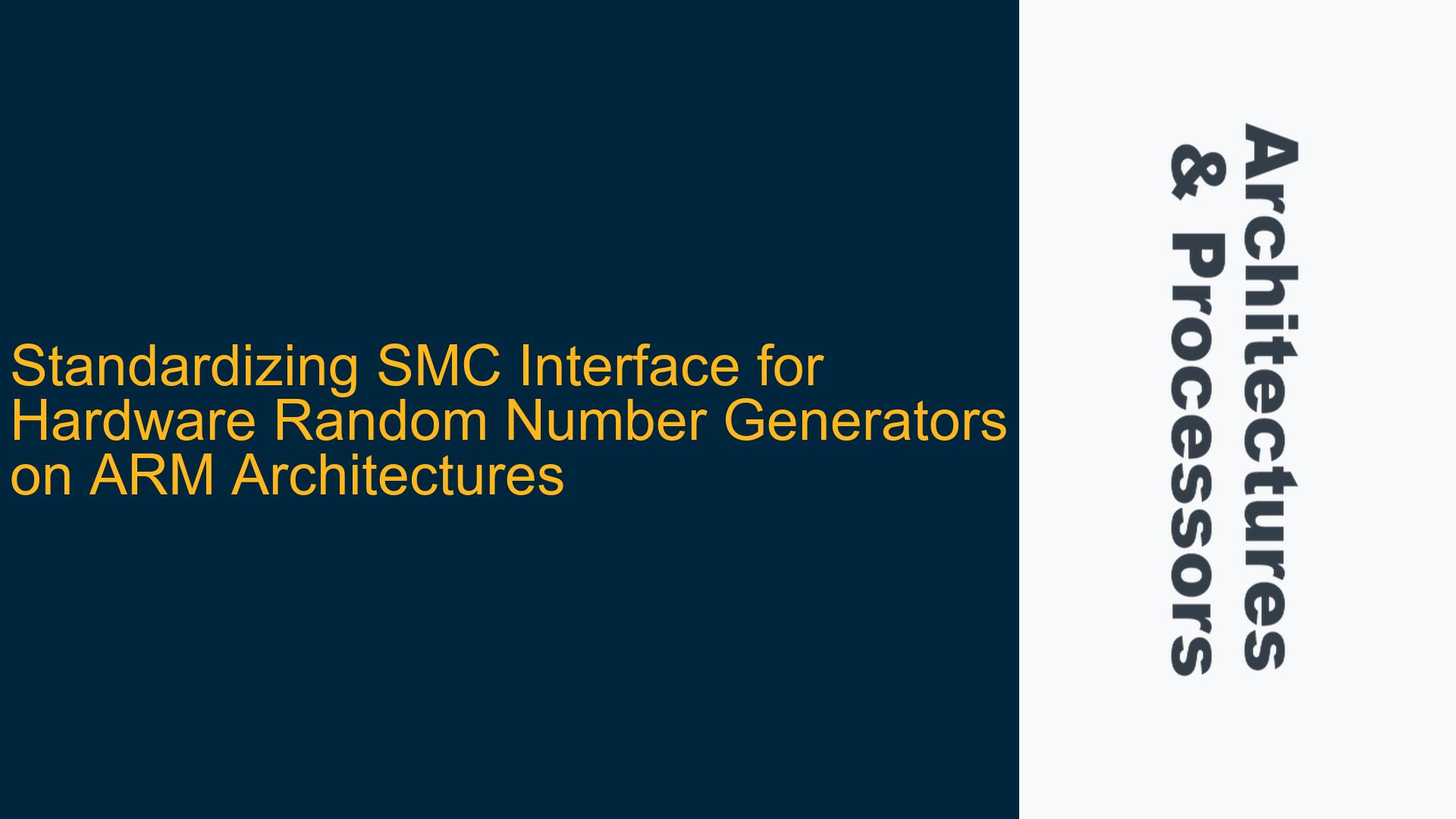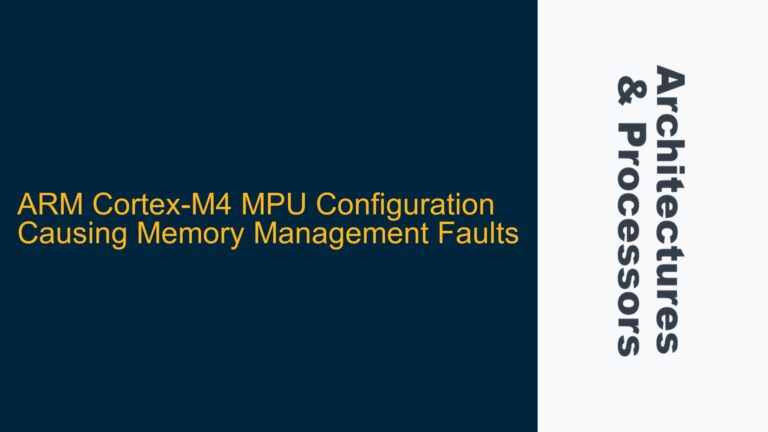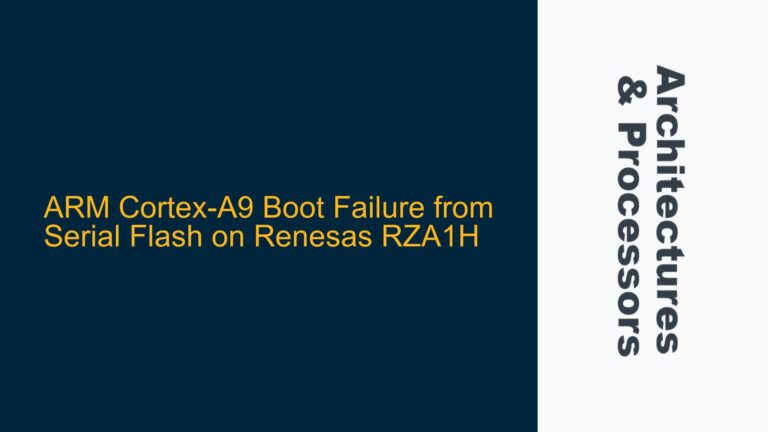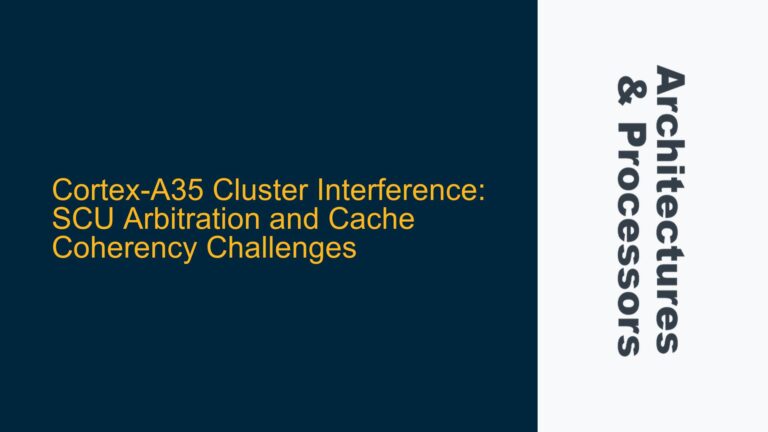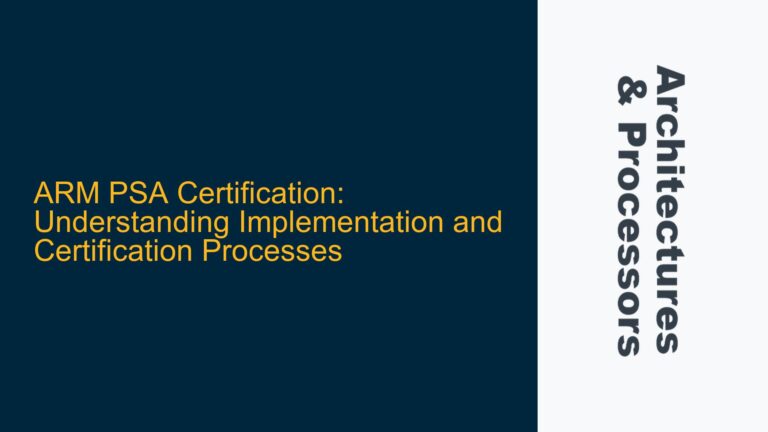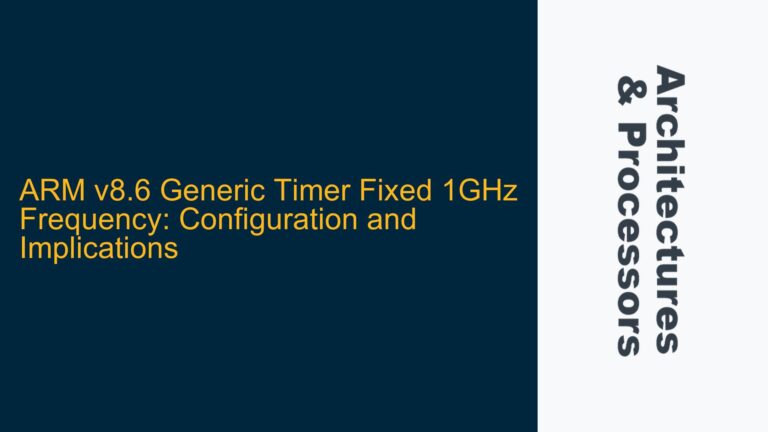ARM Architecture’s Fragmented RNG Implementation Landscape
The ARM architecture, while widely adopted across various embedded systems and processors, suffers from a fragmented implementation of hardware random number generators (RNGs). Unlike x86 architectures where Intel and AMD have standardized instructions like RDRAND, ARM’s approach to RNGs is inconsistent and vendor-specific. This fragmentation manifests in several ways, including ad-hoc drivers for specific RNGs, device tree specifications, and even ACPI tables with embedded device tree pieces. Some vendors have opted to use Secure Monitor Calls (SMC) for RNGs, which, while more flexible, still lack standardization. This inconsistency poses significant challenges for operating system developers and firmware engineers who must write and maintain multiple drivers for different ARM-based systems.
The lack of a standardized SMC interface for RNGs on ARM architectures means that each vendor implements their own SMC calls, leading to a proliferation of custom interfaces. For example, Amazon’s Graviton processors use an SMCCC call to retrieve entropy from the hypervisor, while NXP Layerscape processors implement their own SMC "server" and EFI "client" interfaces. Even the Nintendo Switch, though not an open system, uses SMC for RNG, with a reimplementation available in the Atmosphere custom firmware. This diversity in implementation not only complicates the development process but also hinders the portability of software across different ARM-based platforms.
The absence of a unified RNG interface on ARM architectures also impacts the security and performance of systems that rely on random number generation. Without a standardized approach, developers must rely on vendor-specific solutions, which may not always meet the required security standards or performance benchmarks. This issue is particularly critical in applications where cryptographic security is paramount, such as in secure boot processes, cryptographic key generation, and secure communications.
Vendor-Specific SMC Calls and Their Implications
The use of vendor-specific SMC calls for RNGs introduces several challenges and potential pitfalls. First, the lack of standardization means that each vendor’s implementation may have different requirements and behaviors, making it difficult for developers to write portable code. For instance, the SMC call parameters, return values, and error handling mechanisms can vary significantly between vendors. This variability can lead to subtle bugs and compatibility issues when porting software from one ARM-based platform to another.
Second, the reliance on vendor-specific SMC calls can result in inconsistent performance and security characteristics. Different vendors may implement their RNGs using different hardware or software mechanisms, leading to variations in the quality and speed of random number generation. Some vendors may use dedicated hardware RNGs, while others may rely on software-based solutions or hybrid approaches. These differences can impact the overall system performance, especially in applications that require high-speed random number generation, such as cryptographic operations or simulations.
Third, the lack of a standardized SMC interface for RNGs complicates the development and maintenance of operating systems and firmware. Developers must write and maintain multiple drivers for different ARM-based platforms, each with its own SMC call interface. This increases the complexity of the codebase and the risk of introducing bugs or security vulnerabilities. Moreover, the absence of a unified interface makes it difficult to implement cross-platform optimizations or to leverage common libraries and tools for random number generation.
Towards a Standardized SMC Interface for ARM RNGs
To address the challenges posed by the fragmented RNG implementation landscape on ARM architectures, it is essential to establish a standardized SMC interface for hardware random number generators. This standardization would provide a consistent and portable interface for RNGs across different ARM-based platforms, simplifying the development process and improving the security and performance of systems that rely on random number generation.
A standardized SMC interface for RNGs should define a common set of SMC call parameters, return values, and error handling mechanisms. This would ensure that developers can write portable code that works across different ARM-based platforms without needing to account for vendor-specific differences. The interface should also specify the required security and performance characteristics of the RNG, ensuring that all implementations meet a minimum standard of quality.
One potential approach to standardizing the SMC interface for RNGs is to leverage the ARMv8.5 architecture’s new random number instructions. These instructions provide deterministic and true random numbers that conform to various national and international standards. By incorporating these instructions into a standardized SMC interface, ARM could provide a consistent and high-quality RNG solution across all ARM-based platforms. However, this approach would require widespread adoption of the ARMv8.5 architecture, which may take several years.
In the meantime, ARM could work with vendors to define a common SMC interface for RNGs that can be implemented on existing processors. This interface could be based on the existing SMCCC (SMC Calling Convention) and could include extensions for RNG-specific functionality. By collaborating with vendors, ARM could ensure that the standardized interface meets the needs of both hardware manufacturers and software developers, providing a practical and effective solution for the fragmented RNG implementation landscape.
In conclusion, the lack of a standardized SMC interface for hardware random number generators on ARM architectures poses significant challenges for developers and system designers. By establishing a common interface, ARM can simplify the development process, improve the security and performance of systems that rely on random number generation, and ensure the portability of software across different ARM-based platforms. This standardization effort would benefit not only the ARM ecosystem but also the broader embedded systems industry, providing a more consistent and reliable foundation for secure and high-performance computing.
